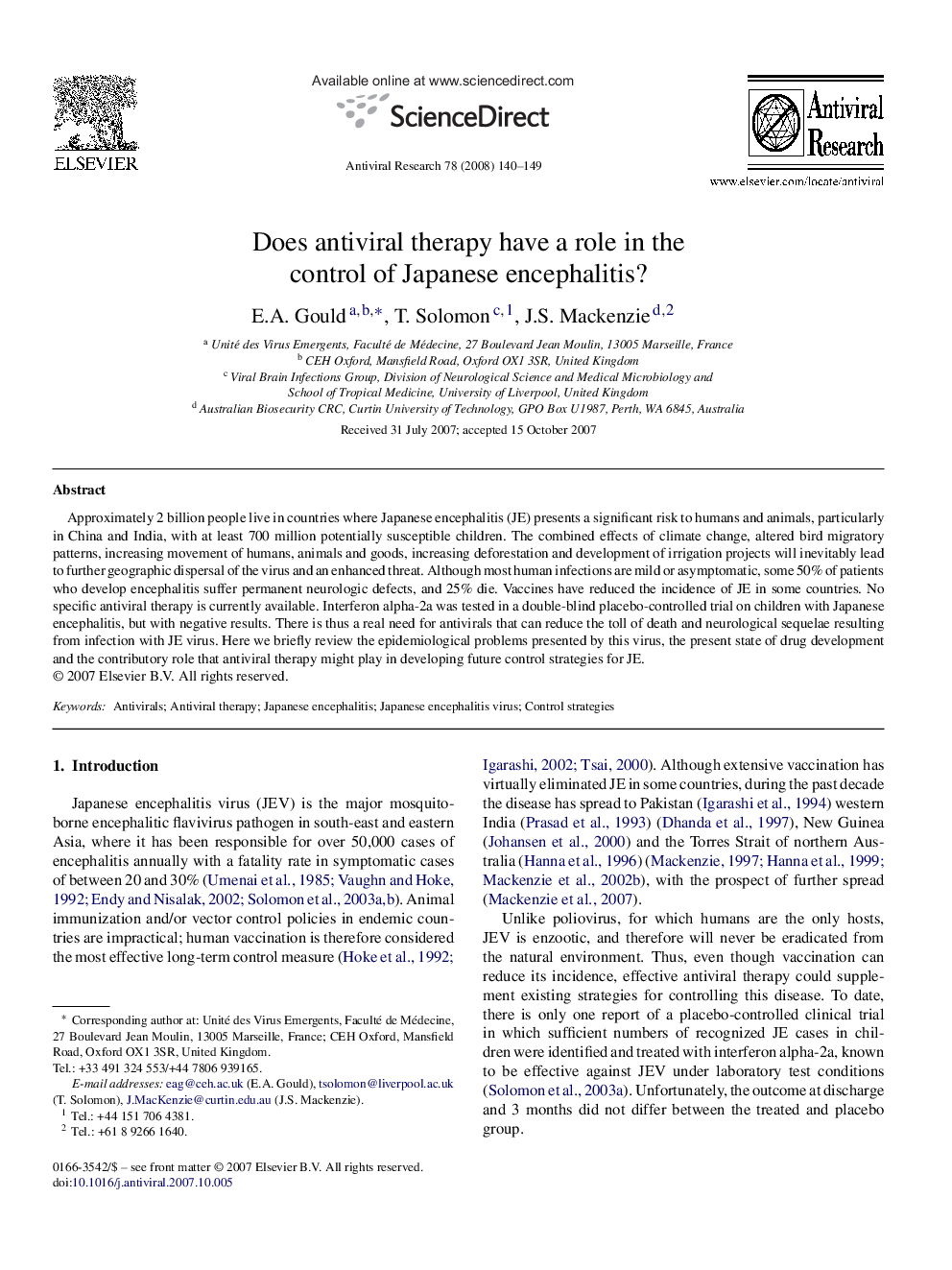| Article ID | Journal | Published Year | Pages | File Type |
|---|---|---|---|---|
| 2511161 | Antiviral Research | 2008 | 10 Pages |
Approximately 2 billion people live in countries where Japanese encephalitis (JE) presents a significant risk to humans and animals, particularly in China and India, with at least 700 million potentially susceptible children. The combined effects of climate change, altered bird migratory patterns, increasing movement of humans, animals and goods, increasing deforestation and development of irrigation projects will inevitably lead to further geographic dispersal of the virus and an enhanced threat. Although most human infections are mild or asymptomatic, some 50% of patients who develop encephalitis suffer permanent neurologic defects, and 25% die. Vaccines have reduced the incidence of JE in some countries. No specific antiviral therapy is currently available. Interferon alpha-2a was tested in a double-blind placebo-controlled trial on children with Japanese encephalitis, but with negative results. There is thus a real need for antivirals that can reduce the toll of death and neurological sequelae resulting from infection with JE virus. Here we briefly review the epidemiological problems presented by this virus, the present state of drug development and the contributory role that antiviral therapy might play in developing future control strategies for JE.
